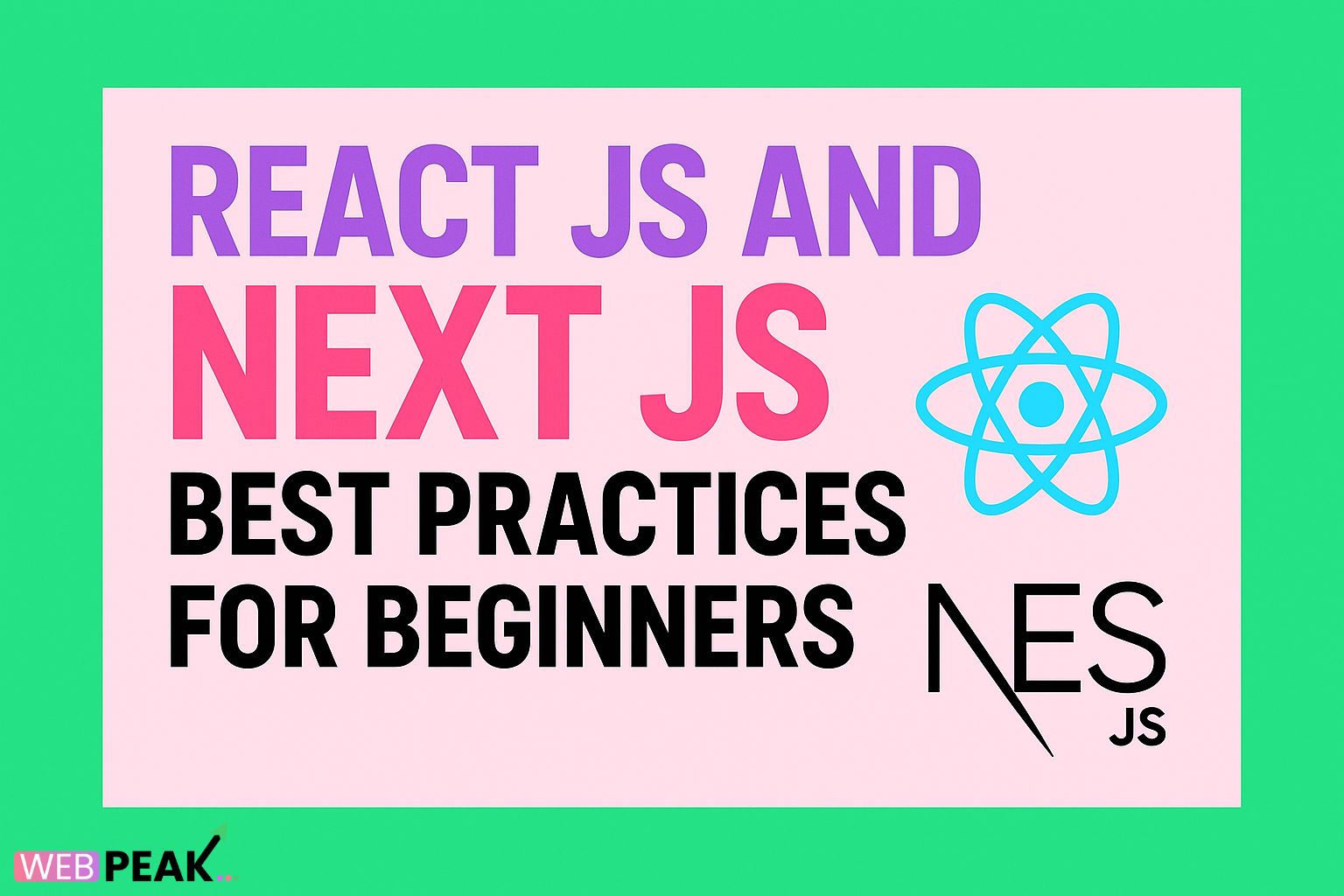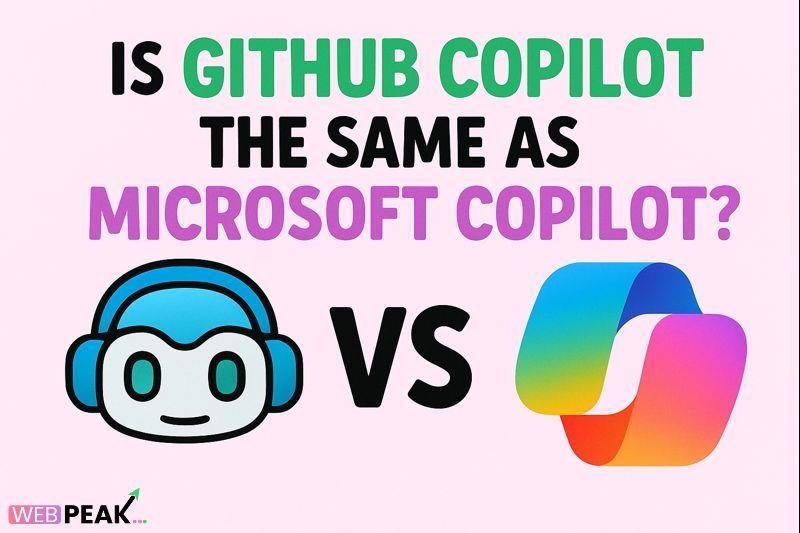React JS and Next JS Best Practices for Beginners
When learning modern web development, React JS and Next JS best practices for beginners are essential to building scalable, fast, and maintainable applications. Both React and Next.js are popular JavaScript frameworks used by developers worldwide. React powers the component-based UI, while Next.js enhances it with server-side rendering, static site generation, and SEO optimization. Following proven coding standards, project structures, and performance strategies from day one can help beginners avoid pitfalls and achieve professional-level results.
Why Focus on React JS and Next JS Best Practices?
React JS has revolutionized how developers build user interfaces by offering a component-based architecture and reactivity. Next.js takes React further by enabling hybrid static and dynamic rendering, file-based routing, API routes, and superior SEO performance. For beginners, adopting best practices ensures cleaner code, better collaboration, enhanced performance, and long-term scalability.
React JS Best Practices for Beginners
1. Structure Your Project Properly
A well-structured project helps maintain clarity as your app grows. Beginners should separate concerns such as components, hooks, services, and assets. A typical React project structure may include:
/components– reusable UI components/pages– page-level components (for Next.js)/hooks– custom React hooks/utils– utility functions/services– API and backend integration
2. Use Functional Components and Hooks
Instead of class components, always prefer functional components with hooks like useState, useEffect, and useContext. They simplify logic, reduce boilerplate code, and improve readability.
3. Keep Components Small and Reusable
Break down UI into smaller, reusable components. Each component should do one job well. For example, a Button component should be used across the app rather than writing new buttons for each feature.
4. Optimize State Management
Manage state efficiently by using useState for local states and useReducer or context for global states. For large-scale applications, consider state management libraries like Redux Toolkit, Zustand, or Recoil.
5. Follow Naming Conventions
Use PascalCase for components (MyComponent.js) and camelCase for functions and variables. Following naming conventions improves code readability and collaboration.
6. Write Clean and Readable Code
Always format your code with tools like Prettier and enforce linting with ESLint. Writing self-explanatory variable names and keeping functions concise will help beginners and teammates understand code faster.
7. Avoid Prop Drilling
Passing props down multiple layers makes the code hard to maintain. Use context or state management libraries to avoid unnecessary prop drilling.
Next JS Best Practices for Beginners
1. Leverage File-Based Routing
Next.js provides an intuitive file-based routing system. Organize pages within the /pages directory and use dynamic routing ([id].js) for parameterized pages.
2. Use Static Site Generation (SSG) and Server-Side Rendering (SSR) Wisely
Next.js offers multiple rendering modes:
- Static Site Generation (SSG): Pre-renders pages at build time for speed and SEO.
- Server-Side Rendering (SSR): Fetches data at request time for dynamic content.
- Client-Side Rendering (CSR): Loads data after the page renders.
Beginners should understand when to use each mode to balance performance and freshness of content.
3. Optimize Images with Next/Image
Use the built-in next/image component for responsive, lazy-loaded images. This significantly improves performance and SEO compared to regular <img> tags.
4. Implement API Routes
Next.js allows you to build backend functionality directly inside /pages/api. Beginners can easily handle authentication, form submissions, or database queries without an external server.
5. Use Environment Variables
Never hard-code sensitive information like API keys. Instead, store them in .env.local and access them via process.env. This ensures security and flexibility across environments.
6. Deploy with Vercel
Next.js integrates seamlessly with Vercel. Beginners can quickly deploy applications with one command, enjoying automatic scaling, CDN distribution, and serverless functions.
7. Optimize SEO with Metadata
Next.js provides the <Head> component for adding metadata. Beginners should include title, meta description, Open Graph tags, and structured data for better search engine rankings.
Performance Optimization Tips
Code Splitting and Lazy Loading
React and Next.js support dynamic imports to split code and load only what is needed. Use React.lazy or Next.js dynamic imports for faster page loads.
Caching and CDN
Leverage browser caching and CDN for static assets. Next.js automatically optimizes assets for global delivery when deployed with Vercel.
Bundle Optimization
Regularly analyze bundle size using next-bundle-analyzer to identify heavy dependencies and reduce unnecessary libraries.
Accessibility
Follow accessibility best practices such as semantic HTML, ARIA attributes, and keyboard navigation support to ensure your app is usable by all.
SEO Checklist for React JS and Next JS Beginners
- Use descriptive meta titles and descriptions.
- Implement clean, semantic HTML.
- Use
<Head>in Next.js for structured metadata. - Optimize images with Next.js
next/image. - Ensure fast loading times with lazy loading and caching.
- Use canonical tags to prevent duplicate content.
- Enable mobile responsiveness with proper viewport settings.
- Submit sitemaps and robots.txt for better indexing.
Common Mistakes Beginners Should Avoid
- Hard-coding sensitive data instead of using environment variables.
- Ignoring performance optimizations like lazy loading.
- Overusing global state when local state is sufficient.
- Failing to handle errors and edge cases properly.
- Neglecting SEO and accessibility improvements.
FAQ: React JS and Next JS Best Practices for Beginners
1. Is Next.js better than React.js?
React is a UI library, while Next.js is a framework built on top of React that provides advanced features like SSR, SSG, and routing. Beginners should learn React first, then move to Next.js for production-ready apps.
2. Do I need Redux with React and Next.js?
For small projects, Redux is not necessary. Beginners can manage state with React hooks or Next.js context API. For large apps, Redux Toolkit or Zustand may be useful.
3. How does Next.js help with SEO?
Next.js pre-renders pages (SSG/SSR), provides optimized metadata handling, and offers tools like next/image, making it SEO-friendly compared to client-rendered React apps.
4. What are the key performance tips for beginners?
Use lazy loading, dynamic imports, Next.js image optimization, caching, and reduce bundle sizes. Always test your site with tools like Lighthouse.
5. Can I build a full-stack app with Next.js?
Yes. Next.js allows you to create API routes for backend logic, integrate databases, and deploy serverless functions, making it suitable for full-stack applications.
6. Which hosting is best for Next.js apps?
Vercel is the recommended hosting provider, but beginners can also use Netlify, AWS, or custom servers depending on project requirements.
Conclusion
Learning React JS and Next JS best practices for beginners will help you write cleaner code, build scalable apps, and optimize for SEO and performance. By structuring projects properly, using functional components, leveraging Next.js rendering modes, and following performance and SEO checklists, beginners can build production-ready applications faster. For professional guidance and advanced solutions, consider working with WEBPEAK a full-service digital marketing company that provides Web Development, Digital Marketing, and SEO services to help your projects succeed online.





